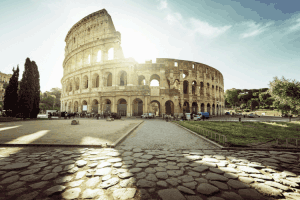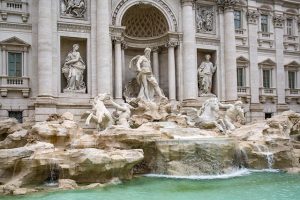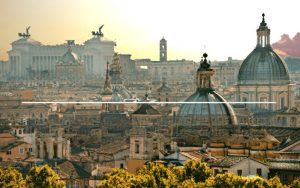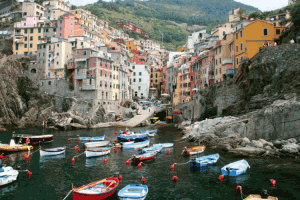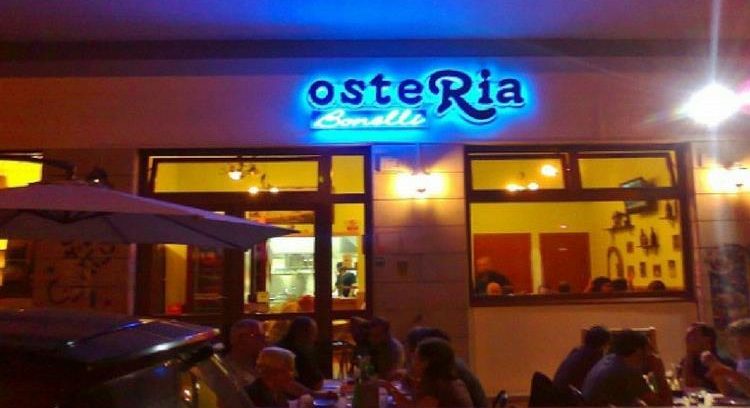Rome remains an enigma. It is an unbelievable cauldron of history and modernity. The city has been host to events that have not only shaped the country but also the world.
There is so much to discover and ponder upon that a short trip usually doesn’t suffice. Trying to catch everything may make you feel overwhelmed. So, it’s prudent to have an itinerary – if you are in the process of making one, this travel guide can be of help. I have handpicked must-see destinations, free things to do, and the best restaurants to go to. I also highly recommend checking out Italy visa application center for all the details you need to travel to the country seamlessly.
Tip: The best time to visit Rome is from late September to Mid November
Never travel to Italy in August, as major establishments are closed due to ferragosto
Best Time to Visit Rome
With its Mediterranean climate, Rome is a compelling destination in every season, but the most ideal times for sightseeing are spring and fall to avoid extreme heat or crowds of summer or winter holidays. Late spring (May, early June) brings blooming flowers, mild weather averaging 70 degrees Fahrenheit, and fewer tourists than summer.
While summer means lively cultural festivals and long sunny days, the heat and humidity can be taxing when sightseeing, with temperatures sometimes reaching the 90s or 100s – plus summer is peak tourist season driving up hotel prices. For lovely weather without summer crowds, early fall (September, October) is perfect with average highs of 70-80F, along with autumn food festivals and concerts.
While winters are relatively mild, the rainy season runs November through February with lows in the 40s, albeit decorated for Christmas holidays. Whenever visiting, packing layers is key as even warmer months can start with morning chill or end with evening breezes. Avoiding the intense midday sun of summer is advised too in favor of late afternoons strolling Rome’s picturesque streets and piazzas.
 Featured
Featured
 Featured
Featured
What is the Best Way to Visit Attractions in Rome?
With endless attractions and limited time, planning is key for making the most of Rome. Purchase skip-the-line tickets for big sights like the Colosseum and Vatican Museums to bypass queues that can last hours. Combine sightseeing efficiently by booking hop on, hop off bus tours that allow you to see major landmarks while learning history. Joining group walking tours in neighborhoods like the Jewish Ghetto also guarantees you’ll experience highlights with a knowledgeable local guide.
Visiting big attractions early morning or late afternoon helps avoid the biggest crowds. Make restaurant reservations too for popular eateries to ensure you can sample Rome’s famous pasta and gelato. Planning your Rome itinerary around different neighborhoods or themes like Ancient Rome or Baroque Rome makes seeing main attractions easy and logical too.
Above all, don’t try to pack too much into one day – leave time to discover Rome’s charms at relaxed Italian pace, whether people-watching at a piazza café or window shopping colorful boutiques.
Rome Tourist Attractions
1. Colosseum
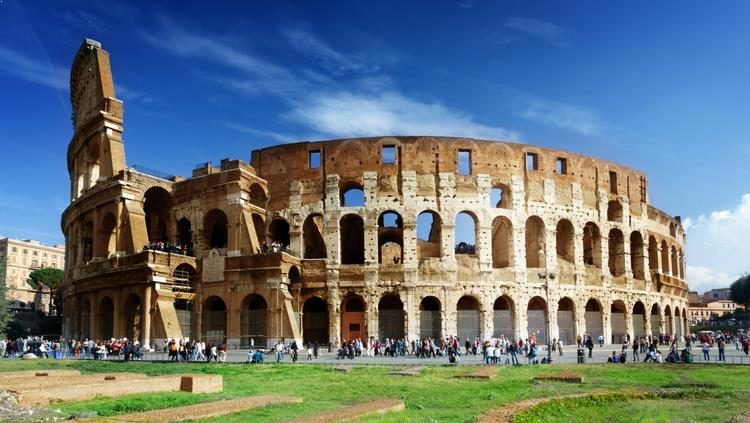
Undoubtedly, one of the most visited monuments in Italy. You are likely to express a swarm of tourists thronging to this place where gladiators once fought for their lives.
It is believed that the Colosseum dates all the way back to 72 A.D. During that time, the place could accommodate over 65,000 people! There are over 80 entrances to this behemoth building, so you can imagine what a towering presence it has.
Tip: The Colosseum is open every day, except January 1st and December 25th.
Tickets to the monument can be bought at the counter (not advisable), and through online (guided tours).
Due to security concerns, tourists are expected to report to the ticket desk half an hour prior to the reserved time.
2. Roman Forum and Palatine Hill
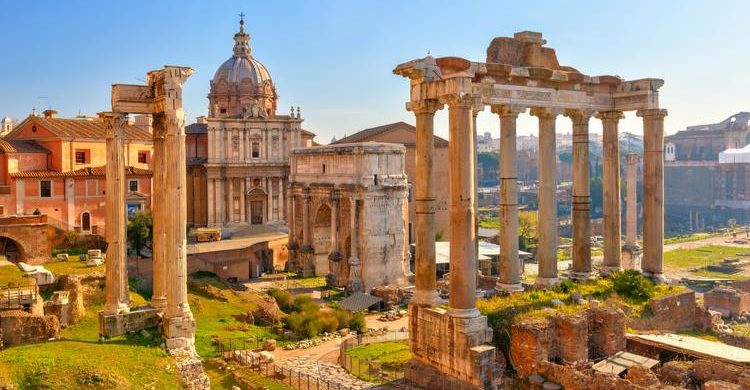
Just next to the Colosseum are the stimulating sites, known as Roman Forum and Palatine Hill. One ticket gets you entry to both of these, and you can walk freely between the two.
The Roman Forum was the epicenter of social and political activity in the BC era. The place went through transformation under different kings, so it is highly recommended that you take the help of a guide to fully understand its evolution and eventual ruin.
Palatine Hill, once the home of emperors and temples, is now a key tourist attraction in Rome (although it gets overshadowed by the Colosseum next-door). The place offers great views and the perfect setting for spending some time under the shade of trees.
Tip: As the Colosseum, Roman Forum, and Palatine Hill can be visited on the same ticket, it’s advisable to start off with Palatine Hill. The queues are way shorter here.
3. Peter’s Basilica and Vatican Museum
If you are visiting Rome, St. Peter’s Basilica, Sistine Chapel, and Vatican Museums are must-visit places. There is so much history, tradition, and spirituality associated to these places that it is hard not to be overwhelmed by the sights.
St. Peter’s Basilica is, in more ways than one, central to the spirit of Rome. It dominates the city’s skyline and is spiritually important to Catholics all over the world. Key attractions at St. Peter’s Basilica include St. Peter’s Square, St. Peter’s Baldachin, and Bronze Statue of St. Peter.
The Vatican Museum is more than just Sistine Chapel. There are over 1400 rooms in this grand palace, and with so much to absorb, it can get overwhelming for the most experienced travelers. Therefore, having a plan helps. I highly recommend keeping these in your must-visit list when visiting the Vatican Museum – Sistine Chapel, The Last Judgment, Raphael Rooms, Apollo Belvedere and the Belvedere Torso, and Porphyry Basin.
Tip: Book tickets online to avoid the long queues. Take a printout of the map of the museum to navigate through this marvelous maze.
In addition to these must-visit tourist attractions, the other points of interest in Rome include Trevi Fountain, Spanish Steps, Castel Sant’Angelo, Piazza Navona, Saint Peter’s Square, and Galleria Borghese.
4. Roman Forum and Palatine Hill
The Roman Forum was the pulsing heart of Ancient Rome with key temples, halls, shops and meeting places all located here. Adjacent Palatine Hill is the legendary birthplace of Rome where Romulus and Remus were said to have been found by a she-wolf. As you explore these archeological ruins, you’ll walk on the same stones where events, trials and revolutions unfolded that decided the fate of the Western world at that time. It’s an awe-inspiring experience.
In addition to these must-visit tourist attractions, the other points of interest in Rome include Trevi Fountain, Spanish Steps, Castel Sant’Angelo, Piazza Navona, Saint Peter’s Square, and Galleria Borghese.
5 Things to Do in Rome
Rome is packed with world-famous attractions and hidden gems waiting to be discovered. Here are 5 essential things you should do when visiting the Eternal City:
- Throw a Coin in the Trevi Fountain – This elaborate Baroque fountain is one of Rome’s most iconic sights. Join the crowd and partake in the tradition of tossing a coin over your shoulder into the water, which legend says will ensure you’ll return to Rome someday.
- Explore the Colosseum and Roman Forum – Take an in-depth tour of Ancient Rome’s monumental amphitheater, the Flavian Amphitheater – better known as the Colosseum, and stroll through the evocative ruins of temples, markets and political buildings in the Roman Forum nearby.
- Climb to the Top of the Dome of St Peter’s Basilica – Get a bird’s-eye panorama over the Vatican and Rome by climbing to the top of Michelangelo’s dome at the heart of the Vatican’s awe-inspiring St. Peter’s Basilica.
- Wander the Neighborhoods – Wander off-the-beaten-path through Rome’s postcard-perfect neighborhoods like Trastevere, a cobbled warren of pastel-colored houses on the banks of the Tiber filled with cafes and galleries.
- Eat Gelato – No visit to Italy is complete without numerous gelatos in hand. Head to neighborhood institutions like Fatamorgana and indulge in this creamy Italian delicacy.
 Featured
Featured
 Featured
Featured
What Shouldn’t You Miss in Rome?
As one of the world’s most visited cities, it’s impossible to see all of Rome’s treasures in one trip. But no visit is complete without seeing these unmissable icons: The Colosseum – this epic amphitheater gives insight into gladiators, emperors and ancient sporting events with guided tours. Roman Forum – see vestiges of markets, temples and political buildings in this evocative ruin-filled valley next to the Colosseum.
Pantheon – gaze up at the dome of this perfectly preserved 2,000 year old Roman temple with its oculus to the sky. St. Peter’s Basilica – marvel at Michelangelo’s Pietà and soaring dome in the Vatican’s grand Renaissance and Baroque-style cathedral. Vatican Museums – admire Michelangelo’s glorious Sistine Chapel ceiling frescoes and vast art collections spanning centuries.
Trevi Fountain – follow legend and throw a coin over your shoulder into this intricately carved Baroque fountain. Piazza Navona – soak up the atmosphere in this lively Baroque square lined with cafes and street performers. Capitoline Museums – peruse ancient sculptures and Renaissance art in medieval palaces atop Capitoline Hill with panoramic views.
Best Restaurants in Rome
Rome’s culinary delights are famous all over! The Romans take their food and wine seriously, and you will find a level of intricate detailing in their offerings. There are several restaurants in Rome where you will find mouth-watering pizzas and gelatos, but as they say, all restaurants are equal, but some are more equal than others! In a nutshell, the best food in Rome is easily accessible. Here’s our pick of the best restaurants in Rome.
1. All’Oro
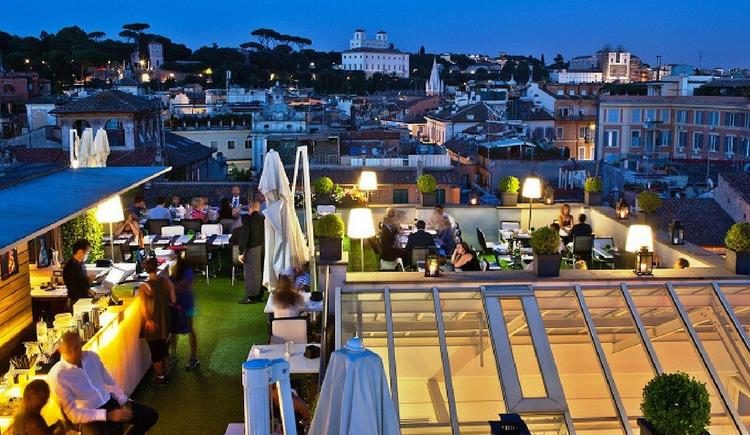
This beautiful restaurant in the vicinity of Piazza del Popolo is truly one of Rome’s finest. I highly recommend trying the coda alla vaccinara (oxtail). You should also try the 6-course All’Origine menu. The ambience inside is chic, and if you have been through Rome’s majestic ruins throughout the day, it can be a much-needed contrast.
2. Armando al Pantheon
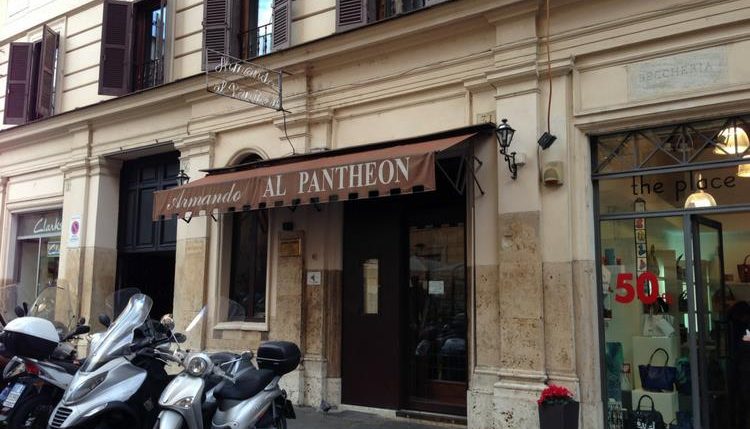
As the name suggests, this restaurant is a favorite among people visiting the soul-stirring Pantheon. I recommend trying the spaghetti alla gricia and spaghetti aglio. The restaurant is always booked, so making a reservation is a necessity.
3. Osteria Bonelli
I am recommending this restaurant for real value-for-money. The dishes and wine are delightful. Served on paper tablecloths, the ambience isn’t chic or urbane, but humble and easy on the pocket. I had a great time at this restaurant considering we were a group of six, and despite eating to our capacity, we were surprised to see how low the bill was.
4. Classic Rustic Roman
The Classic Rustic Roman is the restaurant to go to if you are in the mood to have a dose of the classic Roman cuisine. Specialties of the Roman Renaissance and ancient delicacies are on offer in this beautifully designed restaurant. I recommend trying the potato gnocchi and suppli’ – I will not reveal what these are to keep the surprise quotient intact.
These were some of the best restaurants in Rome. If you are visiting Rome anytime soon, we highly recommend doing your research as it is not a city that you can visit in a day or two. There’s so much to do and experience that a well-prepared itinerary should be created.
